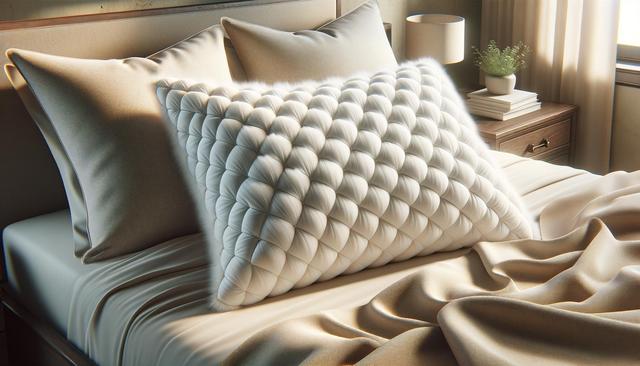Finding the Right Pillow for Restful Sleep
Choosing the right pillow can make a significant difference in the quality of your sleep.

Why Pillow Choice Matters for Sleep Quality
Sleep is vital to overall health and wellbeing, and the pillow you use plays a central role in how well you rest each night. A poorly suited pillow can lead to neck pain, stiffness, and interrupted sleep cycles. On the other hand, a well-matched pillow can promote proper spinal alignment, reduce pressure points, and support a more restorative sleep. With the wide variety of pillow types available today, understanding your personal sleep needs is the first step toward improving rest and comfort.
Pillow choice is especially important for those with chronic discomfort or specific health concerns. For example, individuals with sleep apnea may benefit from pillows designed to keep airways open, while people with allergies might prefer hypoallergenic materials. The right pillow can act as a support mechanism, not just for your head and neck, but for your overall sleep posture.
Understanding Pillow Fill Materials
Pillows come in various fill materials, each offering unique benefits and comfort levels. The most common types include memory foam, latex, down, and synthetic fills. Each material has its characteristics that can impact sleep differently:
- Memory foam: Molds to the shape of your head and neck, offering excellent support and pressure relief.
- Latex: Naturally resilient and breathable, providing firm support with a responsive feel.
- Down: Soft and luxurious, offering plush comfort but less support for those needing firmness.
- Synthetic: Usually made from polyester fibers, these are affordable and hypoallergenic but may not last as long.
Choosing a pillow material depends on your personal preferences, budget, and any sensitivities you may have. For instance, those with allergies should consider synthetic or latex options that resist dust mites and allergens.
Matching the Pillow to Your Sleep Position
Your sleep position greatly influences the type of pillow that will serve you best. Different positions require different levels of support to maintain proper spinal alignment and reduce strain:
- Back sleepers: A medium-loft pillow that supports the natural curve of your neck is usually ideal.
- Side sleepers: A firmer, higher-loft pillow helps fill the space between your ear and shoulder.
- Stomach sleepers: A soft, low-loft pillow or sometimes no pillow at all can help avoid neck strain.
Understanding your primary sleep position can narrow down your pillow choices significantly. Some pillows are even adjustable, allowing users to add or remove filling to customize loft and firmness based on shifting needs or preferences over time.
Additional Features to Consider
Beyond material and firmness, today’s pillows often come with additional features that can enhance sleep comfort. These can include:
- Cooling technology: Ideal for hot sleepers, these pillows incorporate gel layers or breathable materials.
- Adjustable fill: Some designs allow users to modify the amount of fill for personalized support.
- Ergonomic shaping: Contoured pillows help support the neck more precisely, especially beneficial for back and side sleepers.
- Washable covers: Removable and machine-washable covers make maintenance easier and more hygienic.
These extra features can significantly improve sleep quality, especially for those with specific preferences or challenges such as overheating, allergies, or neck pain. Investing in a well-designed pillow with thoughtful features can be a worthwhile step toward better rest.
How to Evaluate Pillow Quality and Longevity
A pillow’s longevity and overall value aren’t just about comfort—they also involve durability and ease of maintenance. High-quality pillows typically maintain their shape and support longer, helping you avoid the need for frequent replacements. When evaluating a pillow’s quality, consider the following:
- Material resilience: Memory foam and latex tend to last longer than polyester fills.
- Construction quality: Double-stitched seams and high-thread-count covers indicate better durability.
- Care instructions: Pillows that are easy to clean and maintain will likely stay fresher over time.
It’s also helpful to look for products that offer trial periods or satisfaction guarantees. This gives you a chance to test a pillow in your own sleep environment, which is the most accurate way to determine whether it meets your needs.
Conclusion: Choosing a Pillow That Supports Better Sleep
Finding a pillow that suits your sleep style, comfort preferences, and health needs can have a significant impact on your nightly rest. There’s no universal solution, but with careful consideration of materials, support levels, and added features, you can identify a pillow that enhances your sleep quality. Whether you’re a side sleeper needing firm support or a hot sleeper seeking cooling materials, there are numerous well-crafted options to explore. Investing in the right pillow is a practical step toward better sleep and improved daily well-being.